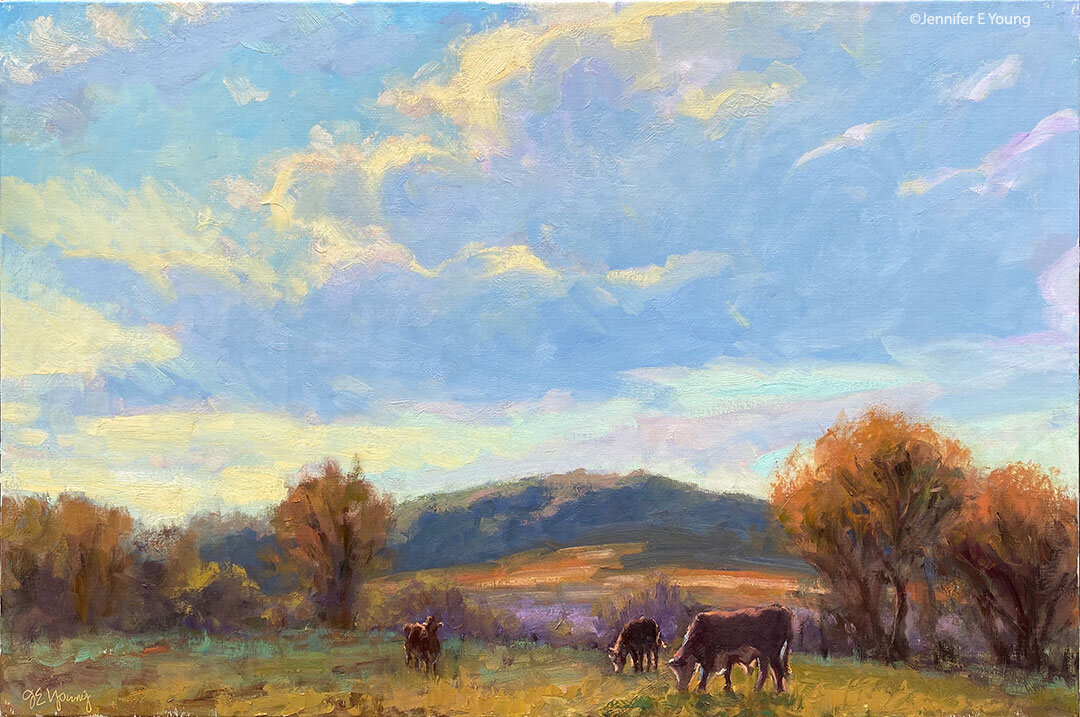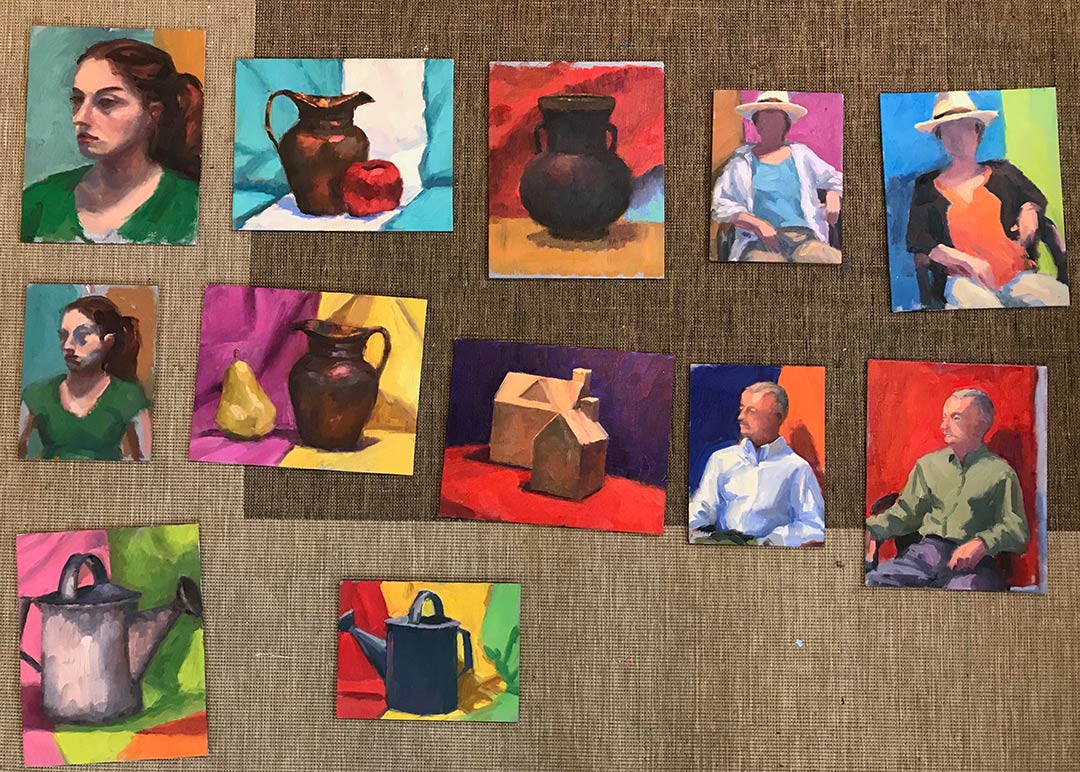Even though yesterday was the first day of spring, it is still pretty cold here. The days are actually varying wildly in temperature, which is typical for March in Richmond. Today temperatures will top out in the mid 30's, but by the weekend it is supposed to be in the upper 60's. Anemones, daffodils, cherry blossoms and forsythia are everywhere, and yet weather reports are actually calling for snow.
So, for a while longer I rely on my sketches and photos to inform my work. I work in the summer months in the studio too, but in warmer weather I can also break out for mornings painting and sketching in the open air. There is nothing quite like working from life. But when conditions are not ideal (or when you have long departed from your subject matter), I have devised (with my husband Dave's computer help and expertise) a way of working in the studio that exceeds working from printed photos.
When I travel to my painting destinations, I take literally thousands of digital pictures. I take shots both up close and far away, and I also shoot the same scene from several different angles if possible. The benefit of shooting digital is that I don't need to buy loads of film, and then worry about whether it will survive going through the x-ray machines at the airports. I can also see my images immediately and delete the ones that are clearly deficient.
When I get home I save my images onto a CD and work directly from a computer monitor that sits next to my easel. As it is, even digital photography is still one generation removed from nature. When an image is then printed off onto photo paper, the scene is even further removed. Printed photos tend to further wash out light areas and blacken out the darkest shadows, so a lot of detail is lost.
Viewing the images directly in digital form on my monitor allows me to see them in a truer light than if I had to print them off. Another advantage is that I can zoom in on a segment of the photo to see more detail--something not possible with printed photos. Of course you have to have taken the picture at a high enough image resolution in the first place, so I have a number of flash cards that hold a lot of large pictures. If traveling for extended periods it is even a good idea to download images along the way to CD or laptop, if possible, so that you have more room on your flash card (or memory stick) to take more pictures!
Here is my monitor/easel setup:
Â

















